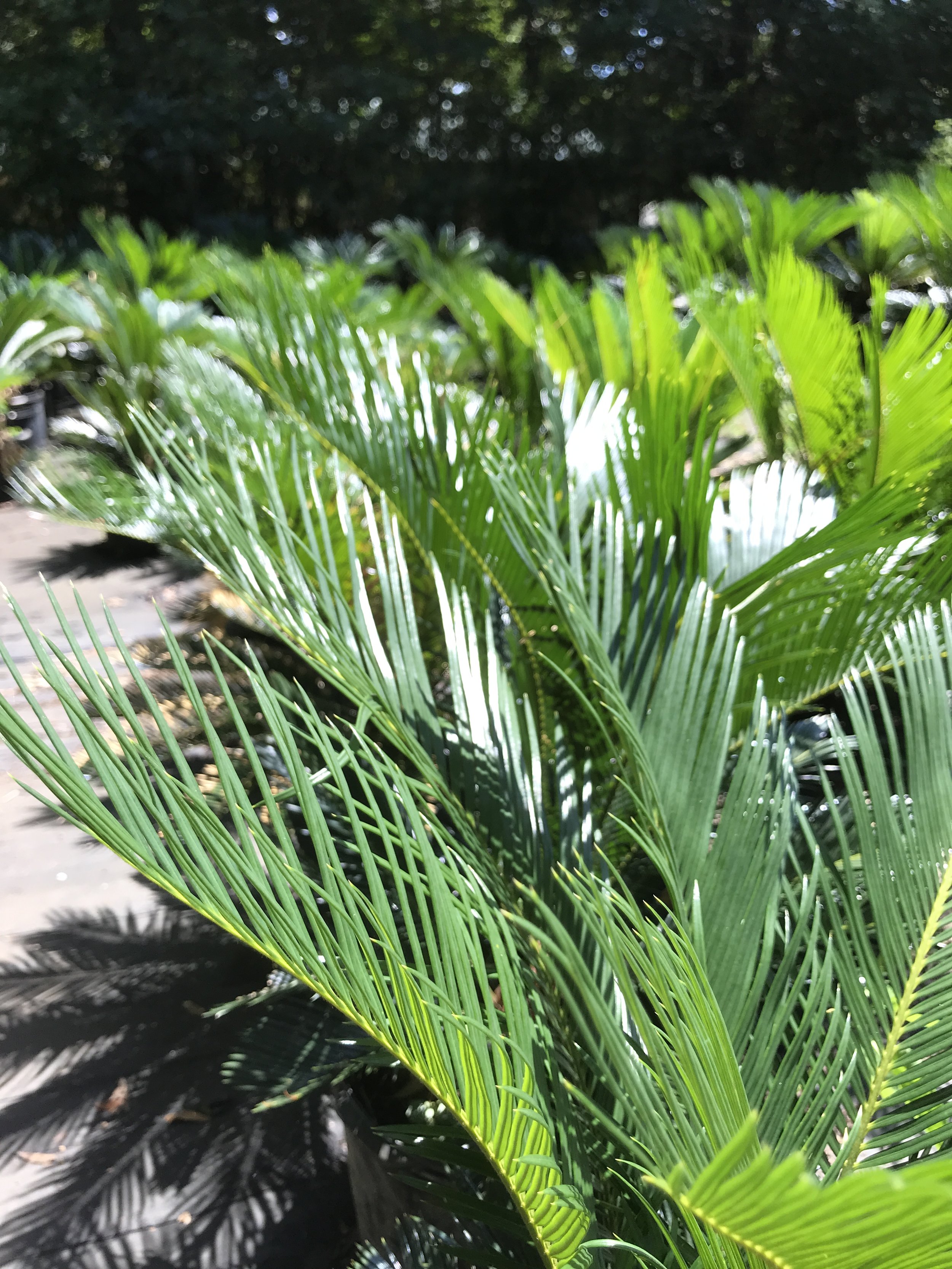
King Sago Palm (Cycas revoluta)
A rugged trunk, topped with whorled, stiff, feather-like leaves growing in a circular pattern. Rather than continuously adding foliage, Sago's produce a periodic "flush" of new leaves, called a "break". Eventually, offsets begin to grow at the base of the specimen, and occasionally in the crown. The addition of offsets provides a source of new plants and many possibilities for developing a unique specimen.
Native habitat: While various species of Cycads can be found throughout the world, the subtropical C. Revoluta is native to the Far East.
Size: The growth habit of Cycas Revoluta displays an upright trunk with a diameter from 5" to 16" depending on age, these plants can eventually become quite large with a leaf span of over 6' (2m) in diameter.
Cold hardiness: This subtropical plant adapts to a wide range of temperatures from 15 to 110 degrees F. Accepts full sun or shade, thrives with attention, but tolerates neglect.
Culture: Propagation is by seed or removal of offsets.
Landscape use: These durable plants seem to grow in almost any condition. In the landscape or garden, Sagos do best when established in a well-drained area, and when planted slightly (an inch or so) above ground level. They are fabulous when used as Bonsai.
Other notes: Cycads trace their origins back to ancient flora or the early Mesozoic era. Often called "living fossils", Cycads have changed very little in the last 200 million years; they are extremely long-lived.




